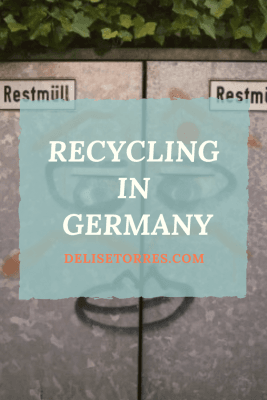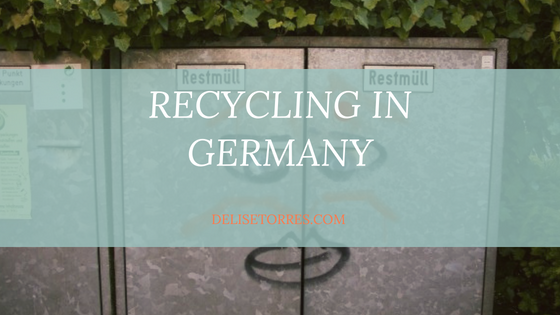This is part of my ongoing series on surviving in Germany based on my own experiences. Recycling in Germany is an intrinsic part of the waste management system. No need to search for a collection area, just segregate and throw in the designated container.
Sorting
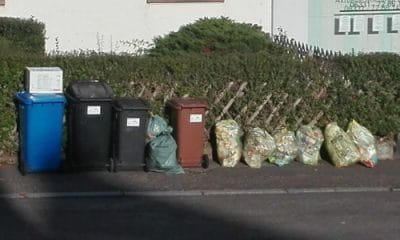
Recyclables are sorted into five groups: “recyclables” (plastic, tin cans, aluminum, cartons), bio (anything organic like fruit peels or egg shells), paper, glass, and all other trash that doesn’t fit into these categories. The key is to have enough containers inside your house to keep it all orderly so it doesn’t look like a recycling center. When it comes time to take it outside, you’ll find three different trash bins: brown for bio, blue for paper, and black for the “normal” trash (the colors may vary depending on the region). You’ll get a special yellow bag to place your recyclables. On collection day, your sidewalk will look like the picture shown.
Collection Days
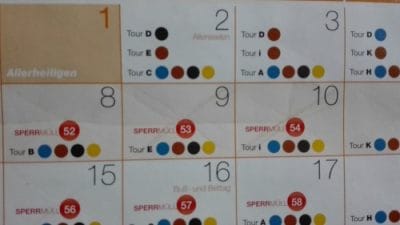
The city provides you with a handy calendar, which includes the schedule. Each type of bin is collected by a different truck, all on the same day, but when there are holidays, the schedule can get mixed up, and bins can be collected one per day.
Bear in mind that, as discussed in Part 3, people living in a “shared” apartment building take turns placing the bins in the sidewalk, so you have to be mindful on when your turn is.
Bins are supposed to be placed in the sidewalk the day before collection. Some people can be a bit obsessive about this, putting out the bins early afternoon the day before, and taking them back in almost immediately after they’re empty. Need to keep the sidewalks clear!
Glass
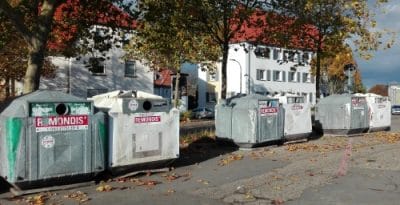
Depending on the region, glass may not be collected with the rest. You have to throw it in special containers placed around the city. You’ll find three types: one for “Weißglas” (clear), “Grünglas” (green), and “Braunglas” (brown).
Make sure you’re not dropping glass bottles on Sundays or holidays. Anti-noise rules forbid it. It is actually only supposed to be done during weekdays from 7 am to 8 pm.
Other Items
On special days during the year, there is a special collection for “Sperrmüll” or big items, like furniture. You just need to place them out on the sidewalk to be picked up. Every municipality provides you with a nice description of what is allowed as Sperrmüll and what is not. There are also special collection centers operating year-round where you can drop off all types of items, including electronics.
Pfand
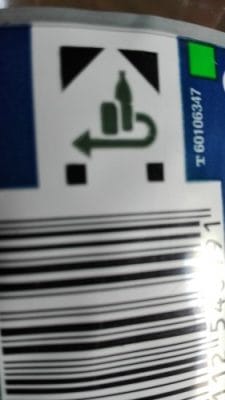
Another issue with recycling is Pfand. This is an extra fee you pay when you buy bottled drinks. These bottles are not included with the trash but are returned to a collection station located in stores. You place the bottles and get a receipt for the deposit. Then you go to the cashier and you’ll get your money back. So, not only do you need five containers for the trash but also an area to collect bottles with Pfand.
The Pfand for each plastic bottle is 25 cents. This system has created an interesting trend, mostly in cities, where very poor people, sometimes old retired people with a very low retirement plan, make rounds through the city and check every trash can for bottles with Pfand. So if you are touring a city, you are actually doing something good by throwing your precious Pfand bottle into the trash.
Recycling in Germany is easy once you understand how it works and have figured out how to keep everything organized.
Have I missed anything? Let me know in the comments below.
